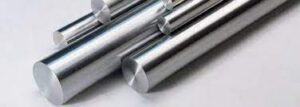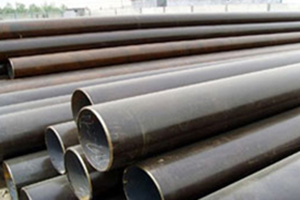Introduction
Stainless steel, celebrated for its versatility and resilience, finds itself facing challenges in the form of corrosive environments. Among its diverse grades, 410 stainless steel stands as a testament to strength, yet it possesses limitations when exposed to acidic environments. In this comprehensive exploration, we embark on a journey to unravel the intricacies of using 410 stainless steel in acidic settings, diving into its composition, susceptibility to corrosion, protective measures, and the careful considerations that must be taken to ensure longevity and performance.
The Acidic Enigma: Corrosion’s Stealthy Intrigue
 Corrosion in acidic environments is an enigma that challenges the mettle of stainless steel. While celebrated for its corrosion resistance, 410 stainless steel unveils limitations when faced with the acidic onslaught, a phenomenon that underscores the intricate dance between materials and environments.
Corrosion in acidic environments is an enigma that challenges the mettle of stainless steel. While celebrated for its corrosion resistance, 410 stainless steel unveils limitations when faced with the acidic onslaught, a phenomenon that underscores the intricate dance between materials and environments.
Decoding the Composition of 410 Stainless Steel
The elemental composition of 410 stainless steel forms the backdrop for its behavior in acidic environments. A symphony of carbon, chromium, and other elements influences its attributes and susceptibility to corrosion.
Corrosion Chronicles: 410 Stainless Steel‘s Vulnerability
Corrosion is a formidable adversary, and 410 stainless steel, while resilient, isn’t impervious. In acidic environments, its vulnerability becomes apparent, requiring a strategic approach to mitigate the impact of corrosive forces.
The Role of Chromium: Guardian Against Corrosion
Chromium, the guardian of corrosion resistance in stainless steel, plays a pivotal role in 410 stainless steel’s behavior. The formation of a protective oxide layer is essential in warding off the corrosive tendencies of acidic substances.
Understanding Acid Attack: Mechanisms of Corrosion
Acidic environments induce corrosion through various mechanisms, including chemical reactions that undermine the integrity of stainless steel. The interplay between 410 stainless steel’s composition and the corrosive agents dictates its response.
Limitations in Acidic Environments: The Unfolding Challenges
410 stainless steel’s limitations in acidic environments emerge due to its susceptibility to localized corrosion, pitting, and crevice corrosion. The complex interplay of factors like pH, temperature, and exposure duration dictates the extent of these challenges.
Protective Strategies: Mitigating Corrosion Risk
 Mitigating corrosion risk in acidic environments involves a multi-faceted approach:
Mitigating corrosion risk in acidic environments involves a multi-faceted approach:
- Material Selection: Considering alternative grades with enhanced acid resistance.
- Coatings and Linings: Applying protective coatings and linings to shield against corrosive attack.
- Temperature and Concentration Management: Monitoring and controlling parameters to minimize corrosion risk.
Passivation: Forging a Shield Against Acidic Perils
Passivation, a surface treatment process, creates a protective oxide layer on stainless steel. While effective, its application in acidic environments requires careful consideration to ensure its success.
Applications Under Acidic Assault: Navigating Industrial Realities
410 stainless steel’s limitations in acidic environments impact a range of applications:
- Chemical Processing: Equipment exposed to acids demands materials with superior acid resistance.
- Wastewater Treatment: Acidic conditions necessitate the use of acid-resistant stainless steel grades.
- Food and Beverage Industry: Acidic ingredients require careful material selection to prevent contamination.
Comparative Analysis: 410 Stainless Steel vs. Acid-Resistant Grades
Comparing 410 stainless steel with acid-resistant grades reveals the importance of material selection in acidic environments:
- Austenitic Stainless Steels (e.g., 316L): Better acid resistance due to higher nickel and molybdenum content.
- Duplex Stainless Steels: Balances strength and acid resistance in certain environments.
Engineering Resilience: Balancing Suitability and Limitations
Engineers and designers must strike a balance between 410 stainless steel’s strengths and limitations. Careful consideration of exposure conditions, material compatibility, and protective strategies is vital for engineering resilient solutions.
